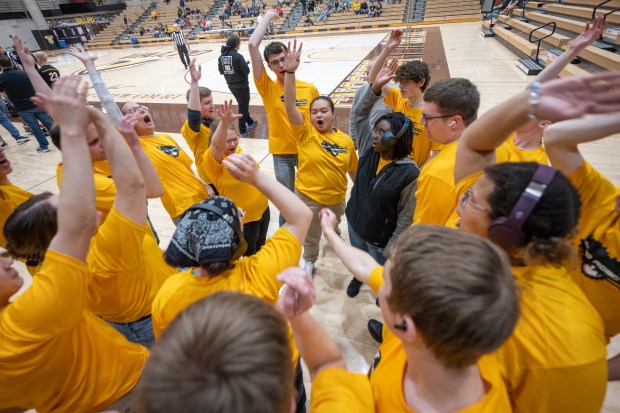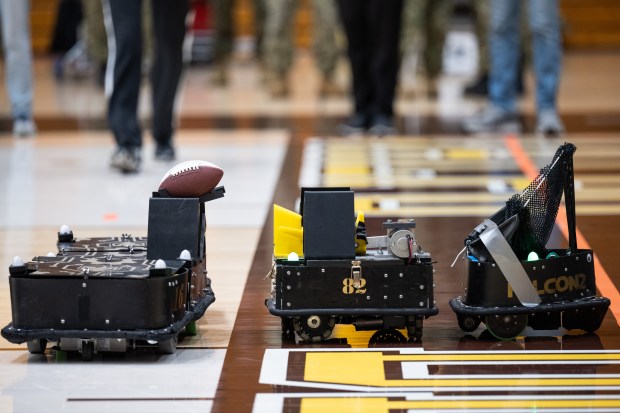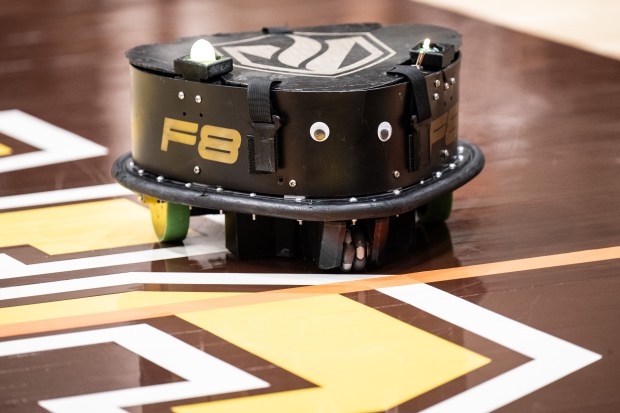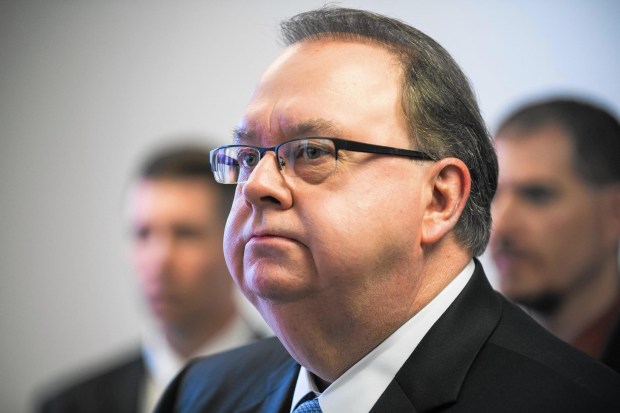Ohio Northern University’s robots are new national collegiate football champs, defeating Valparaiso University in the semifinals and University of Notre Dame in the finals.
VU’s robotics team had held the national championship trophy two years in a row before being defeated Saturday.
This year was also VU’s 10th year in the event, said Sami Khorbotly, professor of electrical and computer engineering.
“Everybody loves and relates to football,” he said.
If you’ve seen the “robots” boxing in the “Rock ‘Em Sock ‘Em Robots” game, you might be surprised to learn the robotic football players look nothing like their American football counterparts.
They’re closer to aggressive Roombas.
“It started as a scrimmage at Notre Dame maybe 16 years ago,” Khorbotly said, and emerged as a sport soon after with Notre Dame playing Ohio Northern.
The Collegiate Robotic Football Conference has 12 teams now and hopes for more. The national championship trophy is named for Brian Hederman, a Notre Dame student who died tragically in 1995. In the early 2000s, his father found a sketch Brian made of a humanoid robot playing football and worked with others to create the robotic football league.
Scoring is similar but not identical to regular American football. A touchdown is still a touchdown and a field goal is a field goal, but extra points are awarded for robotic achievements. A short pass is 2 points and a pass of 10 feet or more is 3 points. A center snap is worth a point. Other points are also awarded.
“The challenge has been that it’s expensive to start a team,” Khorbotly said. Robots cost about $1,500 apiece, and a team needs at least 12. Just like regular American football, there are offensive players and defensive players as well as special teams. Plus, there are “injuries,” so a robot might need to be swapped out after becoming damaged. These robots are designed with impacts expected, but some of the hits are hard.

Robots have existed for a long time, but they’re much more advanced. “Nowadays we have better sensors, better batteries, better actuators,” Khorbotly said.
Lauren Kadlec, a senior from Maple Grove, Minnesota, is co-president of the Valpo Robotics team. “I’m the primary organizer,” she said, making arrangements for the collegiate national championship tourney last weekend and a maker fair to let kids and other visitors have hands-on experiences with technology.
When she graduates, Kadlec is continuing her education at Vanderbilt University, hoping to get a PhD and do research on surgical robotics.
“Every human has natural tremors that will increase as they age,” she said. Robotic surgery is more precise and leads to better outcomes, she said.

Kadlec’s classes at VU have taught her the calculations and theory to do the work. The robotic football team has taught her how to apply the theories.
“I’ve had so much incredible leadership on this team,” she said. Along the way, she’s learned a lot about teamwork and mentoring. “That will apply wherever I go.”
Her love of robotics dates back to high school. “I love science, and quite frankly I was looking for a group of people as nerdy as me,” Kadlec said. The smart kids in high school were focused on robotics.
“I think you’re already seeing robots can help people,” she said. “Personally, I see a lot more robot-human collaborations.”
“Humans can do a lot of things, but not as many very precisely,” Kadlec said. Robots are better at repetitive tasks.

Watching robotic football games Saturday made that clear as humans ran onto the basketball court to reposition robots and the football and otherwise help their players.
“Putting together a team like this, it’s pretty crazy. I’m not going to lie,” said coach Elisa Ballais, a VU sophomore from Morton Grove, Illinois, studying digital media.
“We put a lot of work into it during the entire year,” Ballais said. The team has about 20 to 25 members, basically anyone who wants to chip in. The team requires builders to create the robots, programmers to add plays and other finesse to the basic package allowed by the league, and players to operate the robots.
Last year’s coach was a good mentor, she said. “I would talk to him a lot about pretty much anything.
In 2023, VU won the national championship for the second time in a row. Afterward, the team packed up the robots and other gear to head home from Ohio Northern University in Ada, Ohio. “We were all so dead tired that we were all lazily partying,” Ballais said.
Next year, she plans to let someone else coach as she encourages the emerging juniors to pass on their knowledge and wisdom to younger students.
Doug Ross is a freelance reporter for the Post-Tribune.




